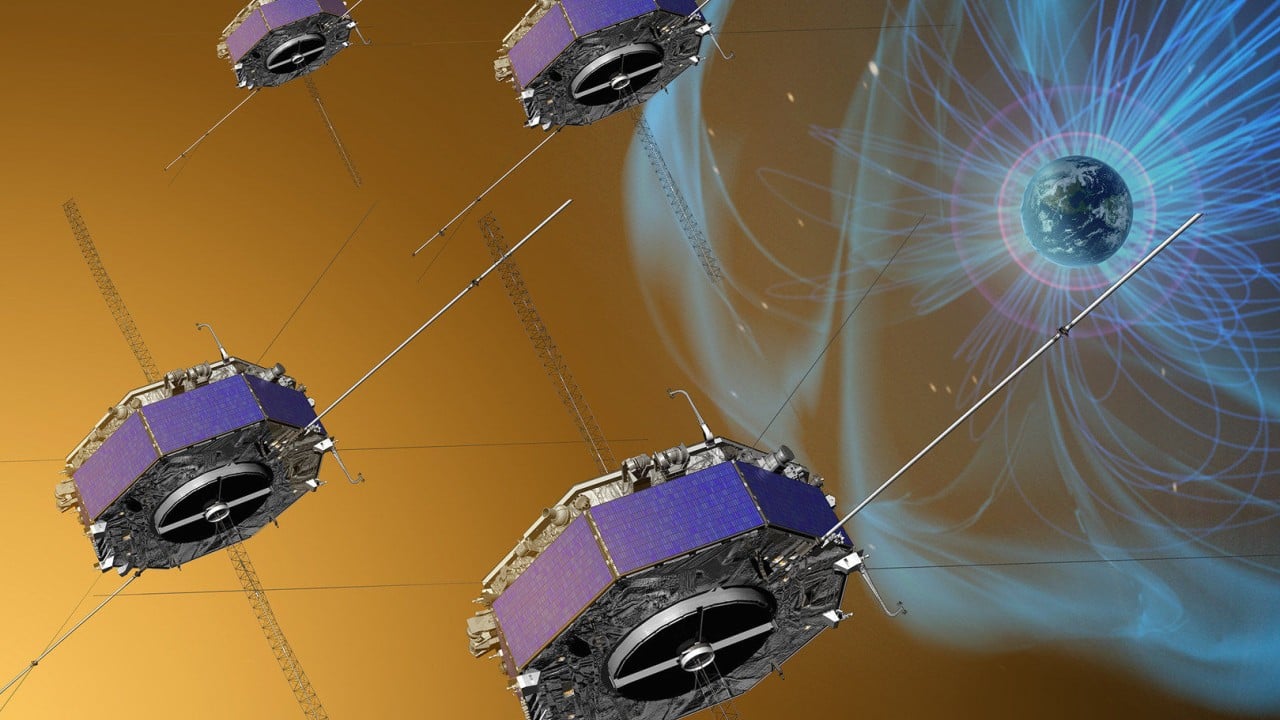Peculiar electromagnetic bursts of energy known as “chorus waves” have been detected far from our planet for the first time by a China-led team of scientists, whose findings have raised new concerns about the risks for spacecraft and astronauts.
Advertisement
The fluctuations originated about 165,000km (100,000 miles) from Earth – three times as far as any previous observation, according to researchers from Beijing, the United States and Sweden, who reported their work in the journal Nature on Thursday.
Using satellites from Nasa’s Magnetospheric Multiscale (MMS) Mission, the team determined that the waves originated in Earth’s extremely stretched magnetic field lines where they were repeatedly struck by charged particles from outer space – akin to plucking the strings of a musical instrument. When converted to audio, the chorus waves resembled the sound of birds chirping at dawn.
Richard Horne, a space weather expert with the British Antarctic Survey, called the findings “a surprising result in a surprising region”, adding that the study would help scientists better understand and predict such radiation in deep space.
“Chorus waves accelerate electrons to energies close to the speed of light … These high-energy electrons are known as ‘killer electrons’ because they have damaged several satellites, costing hundreds of millions of dollars,” Horne, who is not involved in the research, wrote in an accompanying commentary.

Cao Jinbin, a geophysicist and co-author from Beihang University, told state news agency Xinhua that their work challenged a long-standing theory about how chorus waves were generated and propagated.

